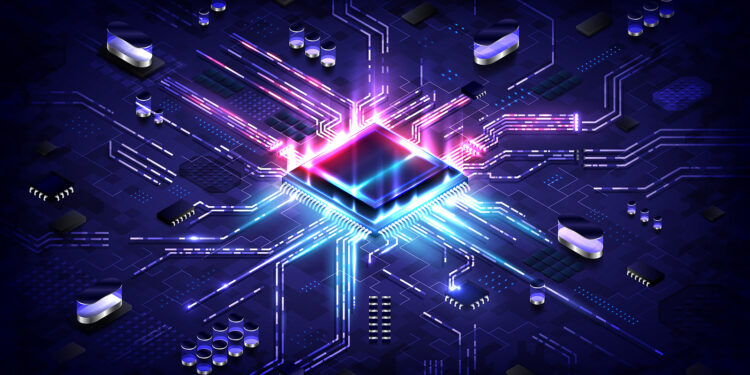Apple is continuously developing its processors to increase the performance and efficiency of its devices. The next big step is the M5 chip, mass production of which has already begun. According to South Korean media reports, Apple started production of the new chip in January. This raises the question of when the first devices with the M5 chip will hit the market and what improvements can be expected compared to the current generation.
Apple is working with Taiwanese semiconductor manufacturer TSMC on its own processors. The new M5 series is manufactured using an advanced 3-nanometer process and is to be used in several devices. Apple will initially start producing the basic version of the chip, while more powerful variants such as the M5 Pro, M5 Max and M5 Ultra will follow later. The introduction of the M5 is not only relevant for end users but also for Apple's long-term strategy in the field of artificial intelligence and cloud computing. The chip is expected to be used not only in MacBooks and iPads but also in servers for AI applications.
Mass production of the M5 has begun
According to the report According to ET News, Apple began mass production of the M5 chip last month. The final step in chip production, known as packaging, is carried out by external companies. This involves protecting the processor and preparing it for installation in various devices. Apple works with several OSAT (Outsourced Semiconductor Assembly and Test) companies, including the ASE Group from Taiwan, the US company Amkor and JCET from China. ASE was the first company to start production, while the other companies will gradually follow suit. The first production run will focus on the standard M5 chip, while the more powerful models will go into mass production later. The manufacturing companies involved are currently investing in additional facilities to be able to produce the high-end variants as well.
Technical details and manufacturing processes
Apple is using the advanced ARM architecture and 3-nanometer technology from TSMC for the M5 series. Compared to the previous generation, the new chip series is said to offer greater energy efficiency and increased performance. It is noticeable that Apple is not using TSMC's more advanced 2-nanometer process for the time being. The high production costs are probably the main reason for this decision. Nevertheless, the M5 series is said to make significant progress through the use of System on Integrated Chip (SoIC) technology. The SoIC process stacks chips vertically, which offers a number of advantages. Thermal efficiency is improved, electrical leakage is reduced, and energy distribution is optimized. In addition, Apple is using a new thermoplastic carbon fiber composite that is said to further improve heat dissipation.
Expected Apple devices with M5 chip
The M5 chip is being introduced gradually in various Apple products. There are already indications as to which devices will be equipped with the new chip generation first.
- iPad Pro: The iPad Pro may be one of the first devices to ship with the M5 chip. According to well-known Apple analyst Ming-Chi Kuo, mass production of the new iPad Pro will begin in the second half of 2025. The market launch could therefore take place at the end of 2025. However, there are also reports that suggest early 2026.
- MacBook Pro: Models with the M5 chip are planned for the MacBook Pro at the end of 2025. Here, the chip could have a particularly positive effect on battery life and multi-core performance.
- MacBook Air: The MacBook Air is also expected to receive an M5 upgrade, but a little later than the MacBook Pro. The new models are expected to launch in early 2026.
- Apple Vision Pro: Apple's mixed reality headset is also expected to receive a new version with an M5 chip. A market launch between fall 2025 and spring 2026 is possible.
M5 chip for AI and cloud services
In addition to the classic end devices, Apple apparently plans to use the M5 chip for its own server infrastructure. Thanks to the SoIC design, the M5 is not only suitable for mobile devices but also for powerful AI servers. This could mean that Apple is investing more in the area of artificial intelligence. This could include improving Siri integration or new AI-based functions in macOS and iOS.
M5 chip as key to the next generation of Apple products
Apple is continuing to drive the development of its processors and is staying true to its strategy of continuously improving performance and energy efficiency with the M5 chip. While the company is foregoing the 2-nanometer process for cost reasons, the new chip still offers significant advantages over the current M4 generation thanks to SoIC technology. The first devices with the M5 chip are expected to appear at the end of 2025. In addition, Apple could use the M5 for its server infrastructure to further expand AI-supported functions. The coming months will show what further details about the new chip generation will be announced. Until then, it remains to be seen whether the M5 chip actually meets expectations in terms of performance and efficiency. (Photo by BOTCookie / Bigstockphoto)
- Future of the iPhone: When will the first 2nm chip arrive?
- Apple Vision Pro: One year later – what’s next?





